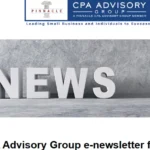From The Ascent — By Maurie Backman —
Self-employment can really be a mixed bag. On the one hand, it’s nice to set your own hours and, in some cases, work from anywhere.
On the other hand, being self-employed means grappling with an income that might vary substantially from one month to the next. That could make recurring expense due dates difficult to keep up with, like taxes, car and mortgage payments. And it could also make it tougher to save up for different goals.
Another challenge of being self-employed is not having taxes withheld from your earnings. When you’re a salaried employee, the paycheck you receive represents your after-tax earnings. So if you get a check for $2,000, you can rest assured that the IRS has already been given its share.
If you’re self-employed and get a $2,000 check, the IRS still needs to be paid a piece of that sum. And figuring out how much of that sum you owe the IRS can be tricky, as your total tax bill will hinge on your total earnings and deductible expenses for the year.
Unfortunately, you can’t just wait until the end of the year, or until the tax-filing season, to pay the IRS what you owe. Self-employed people have to pay the IRS quarterly or otherwise risk penalties.
Meanwhile, if you’re self-employed, you should know that your next estimated quarterly payment is due on Sept. 15, 2023. So now’s a good time to start figuring out what you owe — and setting money aside to pay the IRS.
Don’t get caught by surprise
Some people realize a few days before their estimated quarterly taxes are due that they have to send in a payment — and then have to scramble because they’re already spent the money on something else. So now’s a good time to crunch some numbers — ideally with the help of an accountant — to figure out what type of check you might be sending the IRS in mid-September. If your income didn’t change very much from the previous quarter, then you can generally just plan to send the same amount.
The good news is that the IRS won’t penalize you for getting your estimated tax payments wrong provided that you’re not off by a huge amount. Generally, if you underpay the IRS by less than $1,000, or if you pay at least 90% of your tax bill, you can avoid a penalty.
So if you’re supposed to send the IRS a check for $2,400 each quarter based on your earnings but you only send $2,220, you can generally expect to avoid a penalty. It doesn’t mean you won’t owe the extra money in taxes — you just won’t be penalized for underpaying by so little.
It pays to put the process on autopilot
It’s not always easy to remember to pay estimated taxes. But not making a quarterly payment at all could leave you facing penalties. So if you want to avoid those, it could make sense to set up automatic payments so money is sent to the IRS on time four times a year.
Your accountant should be able to help you determine what amounts to pay to avoid a penalty. And that’ll give you one less thing to worry about.
Contact the Pinnacle CPA Advisory Group
If you need help with mid-year tax planning, or need any type of professional accounting services, please contact our experts at the Pinnacle CPA Advisory Group. Reach us by calling our office at (614) 942-1990, sending email to [email protected], or by filling out the Contact form on this website at cpaagi.com/contact.


